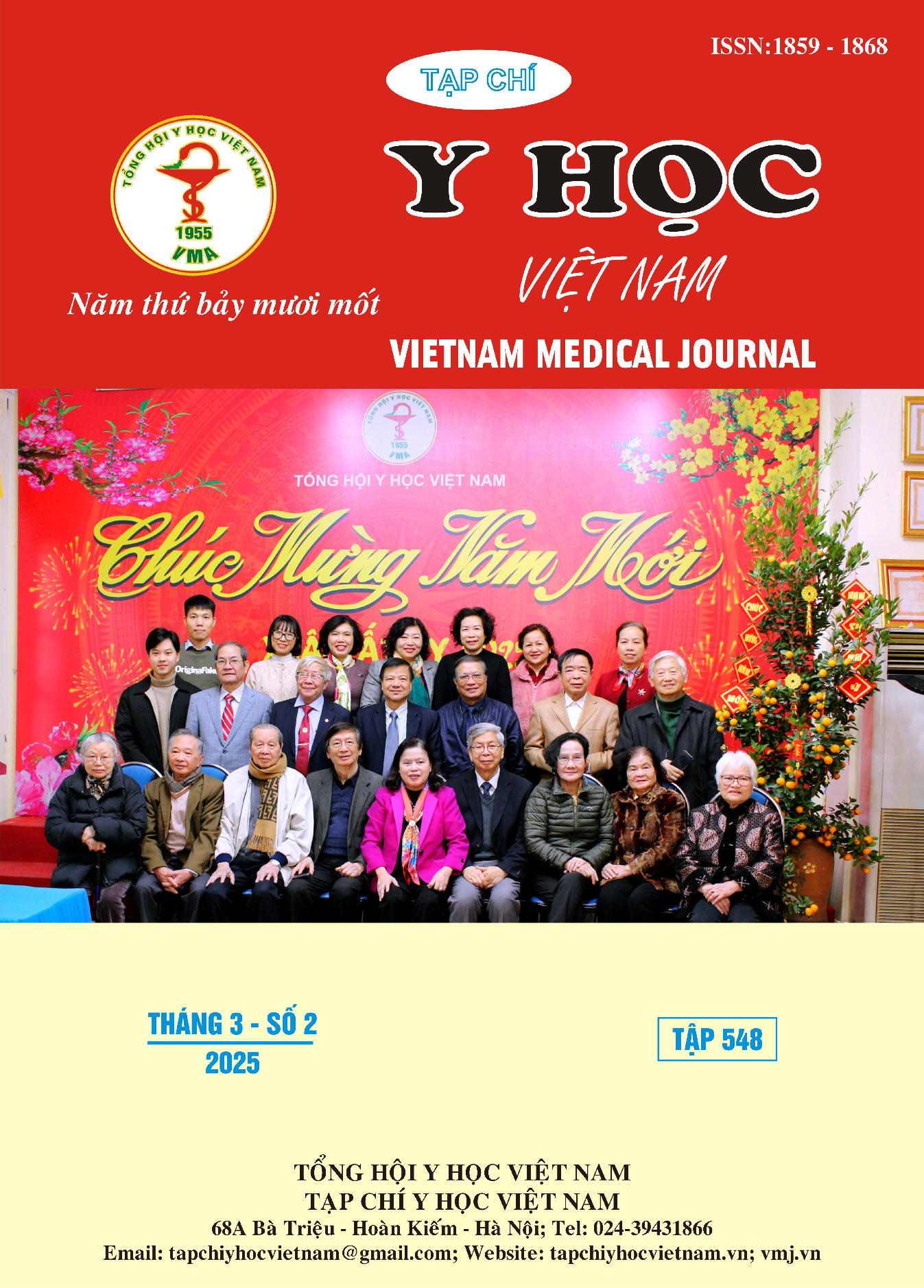EVALUATION OF THE EFFECT OF ENDOSCOPIC TYMPANOPLASTY USING DIFFERENT TYPES OF GRAFTING MATERIALS
Main Article Content
Abstract
Introduction: Endoscopic tympanic membrane perforation repair is used to repair tympanic membrane perforation by placing a graft in patients with chronic otitis media (COM) with tympanic membrane perforation using a perichondral graft or cartilage-perichondral graft. Objective: To describe the clinical and paraclinical characteristics, and to evaluate the results of endoscopic tympanic membrane perforation repair in patients with COM with tympanic membrane perforation by using different material grafts. Materials and methods: A descriptive, prospective, clinical interventional cross-sectional study was performed on 102 cases of chronic otitis media with tympanic membrane perforation who underwent endoscopic tympanoplasty by using tragal perichondrium alone or in combination with tragal chondrium as a graft. Results: 102 cases were included in the study with an average age of 46,3 ± 12,4 years. The tympanic membrane healing rate after 6 months was up to 95.1%. The mean preoperative hearing loss was 39.7 ± 11.3 dB; the mean hearing improved to 26.5 ± 8.1 dB at 6 months. Conclusion: endoscopic tympanic surgery using either a perichondrium graft or a combination of chondrium-perichondrium graft resulted in tympanic membrane healing and improved hearing, as evidenced by the 06 month postoperative results in hearing and morphology of the tympanic membrane.
Article Details
Keywords
endoscopic tympanoplasty, chondrium graft, perichondrium graft, hearing loss
References
2. Abdulvahap A. et al (2017), Endoscopic tympanoplasty. Journal of Otology Volume 12, Issue 2, June 2017, Pages 62-67. https://doi.org/10.1016/j.joto.2017.04.004
3. Emmett SD, Kokesh J, Kaylie D. Chronic Ear Disease. Med Clin North Am. 2018 Nov;102(6):1063-1079. [PubMed]
4. Head K, Chong LY, et al (2020). Topical antiseptics for chronic suppurative otitis media. Cochrane Database Syst Rev. 2020 Jan 06;1(1):CD013055. [PMC free article] [PubMed]
5. Indorewala S, et al (2015). Tympanoplasty outcomes: a review of 789 cases. Iran J Otorhinolaryngol. 2015 Mar;27(79):101-8. [PMC free article] [PubMed]
6. Leach AJ, và cộng sự (2021). Otitis media guidelines for Australian Aboriginal and Torres Strait Islander children: summary of recommendations. Med J Aust. 2021 Mar; 214(5):228-233.
7. Mangia et al (2023), Success rates and predictors of outcomes of type I tympanoplasty performed by residents in a teaching tertiary hospital. Journal of Otology Volume 18, Issue 4, October 2023, Pages 214-219. https://doi.org/ 10.1016/j.joto.2023.09.003
8. Master A, Wilkinson E, Wagner R. Management of Chronic Suppurative Otitis Media and Otosclerosis in Developing Countries. Otolaryngol Clin North Am. 2018 Jun;51(3):593-605.
9. Naderpour M et al (2016). Evaluation of Factors Affecting the Surgical Outcome in Tympanoplasty. Iran J Otorhinolaryngol. 2016 Mar;28(85):99-104. [PMC free article] [PubMed]
10. Yurttas, V., et al (2015). Factors that may Affect Graft Success in Tympanoplasty with Mastoidectomy. ENT Updates, 5, pp. 9e12.


